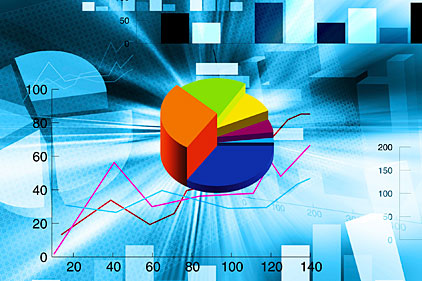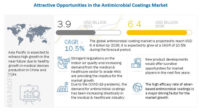Report Predicts Materials Sold into Smart Windows Sector will Reach $545 Million by 2019

GLEN ALLEN, VA - Revenues from smart windows in buildings and vehicles are growing, and according to a new report from NanoMarkets, an industry analysis firm, the value of the coatings, glass and other materials used by the smart (i.e., self-tinting) windows sector will be almost $ 545 million by 2019 growing to around $ 770 million by 2021.
In the past five years or so, smart windows have taken off in both the residential and commercial building markets. They are also increasingly used in automobiles and trucks. There are several different technologies for smart windows, but in all of these technologies, materials play an important role in one way or another. NanoMarkets believes that, as a result, there are important opportunities for materials firms that are emerging from the strong growth in this market.
The report predicts that electrochromic smart windows (including glass and film) will reach $445 million by 2019, making electrochromics the largest segment of the entire smart windows business. NanoMarkets believes this may have much to do with the fact that this sector can boast significant investment by influential firms such as Corning, GE, Saint-Gobain and Seagate. Alternatives to the electrochromic materials platform do not have the same level of clout behind them.
Smart windows materials platforms that are alternatives to electrochromics may have a struggle ahead but can ultimately survive as niche technologies, successful in certain niches primarily because of their price, switching speeds or suitability for use in privacy glass. For example, it is widely acknowledged that PDLC will be used almost exclusively for privacy glass. However, from the perspective of specialty chemical companies, these non-electrochromic technologies represent only limited opportunities. They will consume relatively small amounts of active materials and will not be worth large investments.
Until smart windows technology fully matures, NanoMarkets believes the specialty chemical companies will bide their time, merely supplying research quantities of active materials to smart windows firms and not supporting any one kind of materials platform. By contrast, the glass/film companies can sell to all sides, benefitting from the growth of smart windows as a whole. NanoMarkets expects the smart windows sector to consume $220 million in glass and film by 2019.
The report discusses the opportunities for materials in smart windows and mirrors using electrochromic, photochromic, thermochromic, PDLC, SPD and microblinds. The forecasts and analysis cover not only the active smart materials used in these technologies, but also the substrate materials, both plastic and glass. The report contains revenue and volume (area) forecasts for each smart windows technology with breakouts by film, glass and coatings.
The report also analyzes a number of different business models being used in the smart windows sector and shows how materials play into the total smart windows value chain. It also discusses the role of technology licensing, as well as direct supply of smart coatings and other materials to glass and windows firms.
The report analyzes the materials-related strategies of leading firms in this space including: 3M, Asahi Glass, BASF, Chameleon Photochromic Smart Film, Chromogenics Coolkote, Corning, DuPont, Eastman Chemical/Solutia, GE, Gentex, Guardian Industries, Hitachi, NDFOS, NSG, Pleotint, PPG, Ravenbrick, Research Frontiers, Sage, Saint-Gobain, Scienstry, Southwall, Solvay, Suntek, SWITCH Materials, Toray, Transition Window Tint, US e-Chromics, and View.
For more information on the report, Smart Windows Materials Markets; 2014-2021, visit http://nanomarkets.net/market_reports/report/smart_windows_materials_markets_2014_2021.
Looking for a reprint of this article?
From high-res PDFs to custom plaques, order your copy today!






